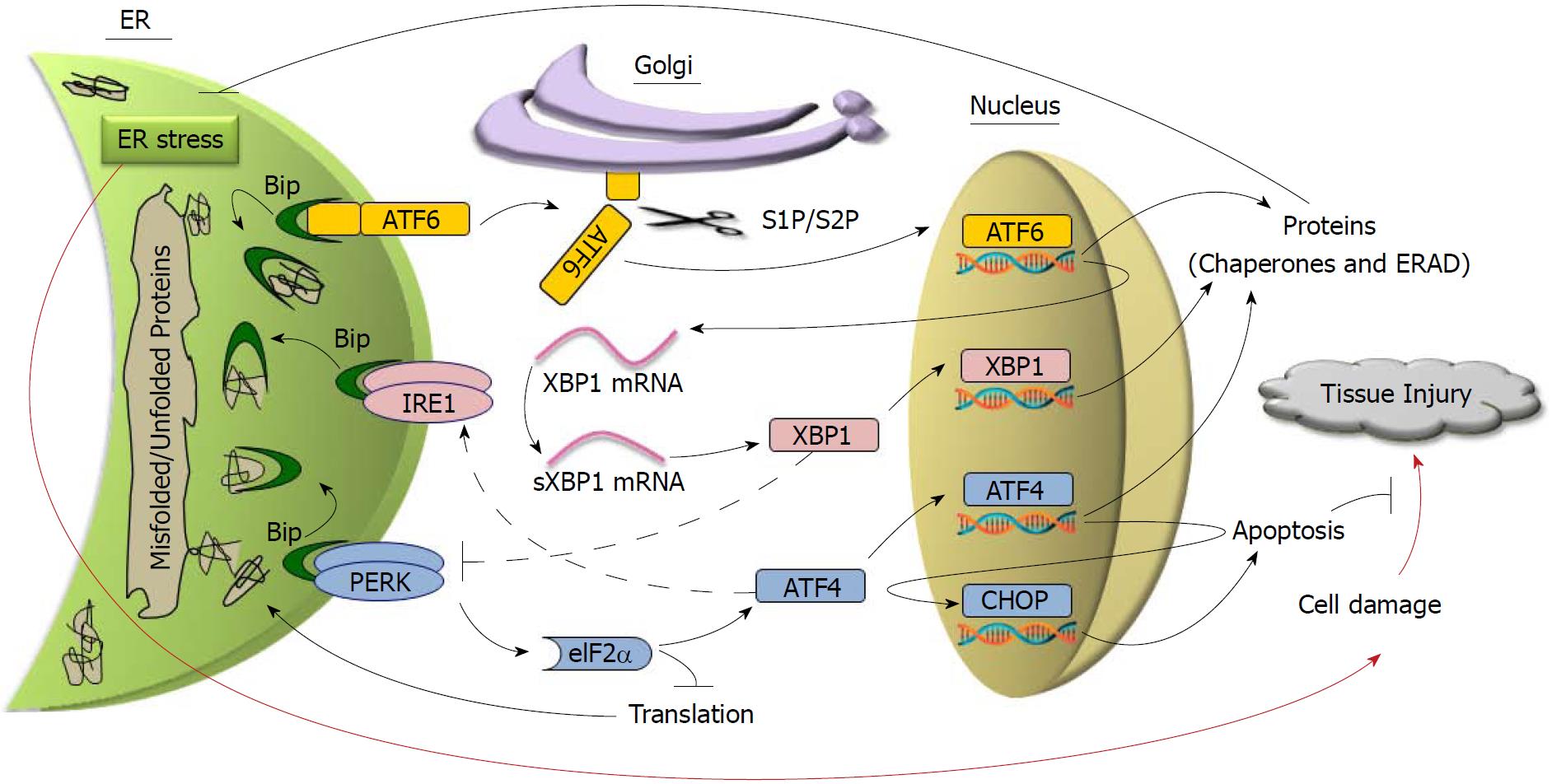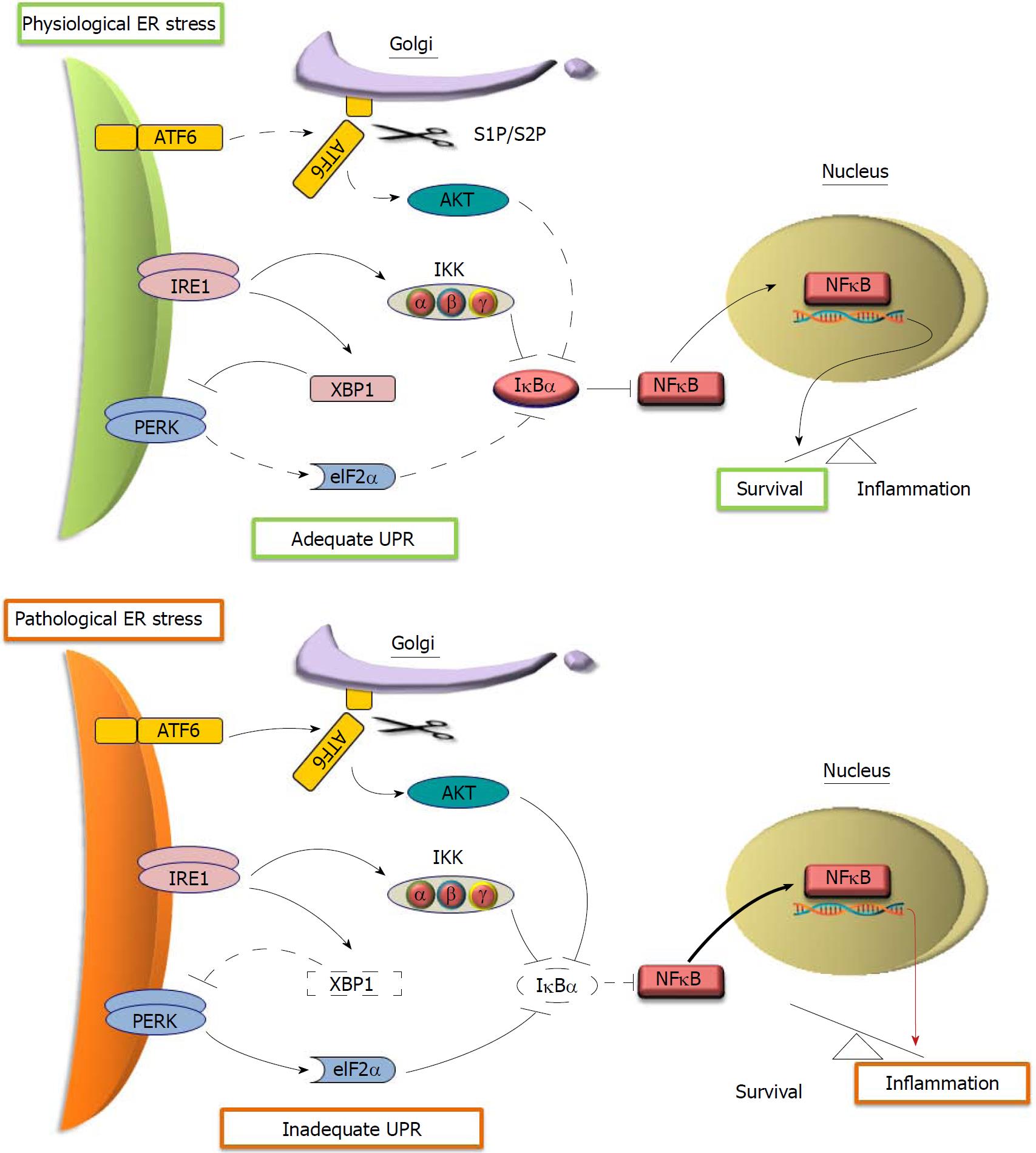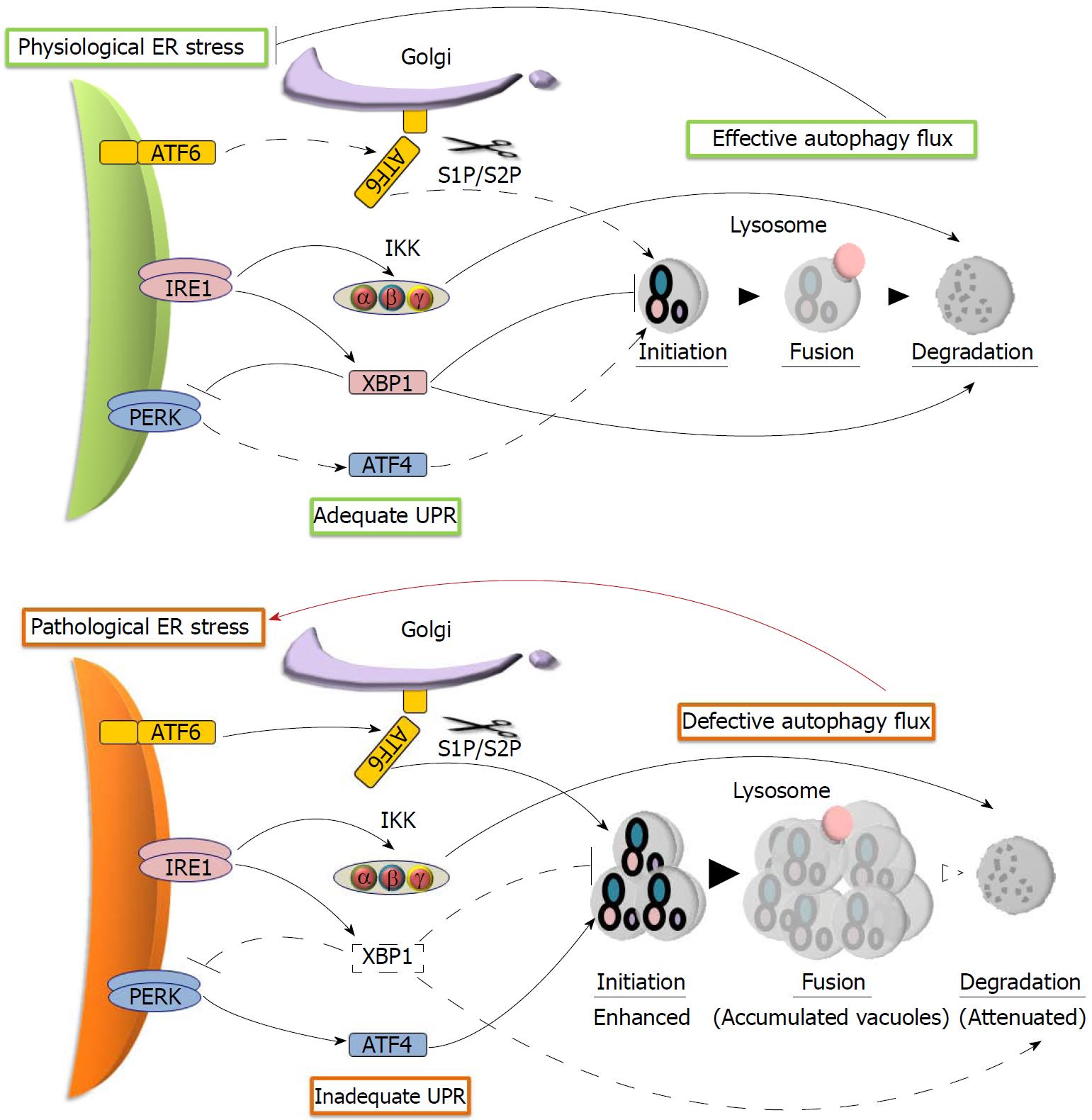Copyright
©The Author(s) 2018.
World J Gastrointest Pathophysiol. Sep 29, 2018; 9(2): 37-46
Published online Sep 29, 2018. doi: 10.4291/wjgp.v9.i2.37
Published online Sep 29, 2018. doi: 10.4291/wjgp.v9.i2.37
Figure 1 Unfolded protein response protects against tissue injury by relieving endoplasmic reticulum stress.
Red arrows represent the pathways that lead to tissue injury. Dotted lines represent the interactions with unclarified mechanisms.
Figure 2 Proposed models of NFκB activation by the unfolded protein response in response to endoplasmic reticulum stress.
In physiological endoplasmic reticulum (ER) stress, adequate unfolded protein response (UPR) activates basal levels of NFκB nuclear translocation that trigger the transcription of pro-survival genes (upper panel). In pathological ER stress, NFκB upregulated by inadequate UPR activates the transcription of pro-inflammatory genes (lower panel). Arrows and lines represent active (solid) and ineffective (dotted) signaling. Thick and red arrows symbolize enhanced interactions and pro-inflammatory signaling, respectively.
Figure 3 Proposed models of autophagy flux regulation by the unfolded protein response in response to endoplasmic reticulum stress.
In physiological endoplasmic reticulum (ER) stress, adequate unfolded protein response (UPR) maintains effective autophagy flux that relieves ER stress (upper panel). In pathological ER stress, however, inadequate UPR causes the accumulation of intracellular vacuoles, which further aggravates ER stress (lower panel). Arrows and lines represent active (solid) and ineffective (dotted) signaling. Thick and red arrows symbolize enhanced interactions and harmful activity, respectively.
- Citation: Barrera K, Stanek A, Okochi K, Niewiadomska Z, Mueller C, Ou P, John D, Alfonso AE, Tenner S, Huan C. Acinar cell injury induced by inadequate unfolded protein response in acute pancreatitis. World J Gastrointest Pathophysiol 2018; 9(2): 37-46
- URL: https://www.wjgnet.com/2150-5330/full/v9/i2/37.htm
- DOI: https://dx.doi.org/10.4291/wjgp.v9.i2.37











